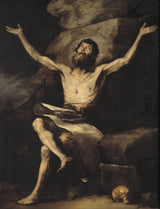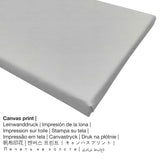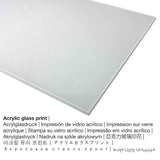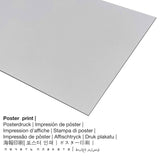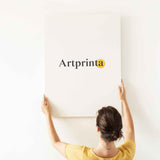Warsztat Jusepe de Ribera, 1644 - Św. Paweł Pustelnik - grafika artystyczna
Podatek jest wliczony. Koszt wysyłki zostanie obliczony W kasie.
Twoja osobista kopia sztuki wizualnej
St Paul the Hermit is a work of art by Workshop of Jusepe de Ribera in 1644. The beyond 370 roczny oryginał ma następujący rozmiar: Wysokość: 208 cm (81,8 ″); Szerokość: 157 cm (61,8 ″) Oprawione: Wysokość: 232 cm (91,3 ″); Szerokość: 186 cm (73,2″); Głębokość: 9 cm (3,5″). Dziś dzieło sztuki zaliczane jest do tzw Muzeum Narodowe w Sztokholmie digital art collection - the museum is Sweden's museum of art and design, a Swedish government authority with a mandatet o preserve cultural heritage and promote art, interest in art and knowledge of art. With courtesy of: Nationalmuseum Stockholm & Wikimedia Commons (license: public domain).The creditline of the artpiece is: . Moreover, alignment is in portret format i ma stosunek boku 3: 4, co oznacza, że długość jest o 25% krótsza od szerokości.
Wybierz materiał produktu
In the dropdown menu next to the product you can pick your favorite material and size. You can choose among the following product customization options:
- Wydruk na płótnie: A UV printed canvas material mounted on a wooden frame. It has the particular impression of three-dimensionality. A canvas print of this artwork will allow you to transform your custom fine art print into a large size artpiece like you know from galleries. Hanging your canvas print: The great advantage of canvas prints is that they are relatively low in weight. This means, it is easy to hang the Canvas print without the support of extra wall-mounts. Hence, canvas prints are suited for any type of wall.
- Drukowany plakat (materiał płócienny): A poster print is a printed canvas with a granular surface texture, that resembles the actual version of the work of art. Please keep in mind, that depending on the absolute size of the poster we add a white margin of around 2-6cm round about the print motif to facilitate the framing with your custom frame.
- Drukowane szkło akrylowe: The print on acrylic glass, often denoted as a print on plexiglass, will convert your favorite original work of art into lovely home décor. Further, it forms a great alternative to canvas or aluminium dibond art prints. With a glossy acrylic glass art print sharp contrasts and painting details become more visible because of the precise tonal gradation.
- Nadruk metalowy (dibond aluminiowy): Aluminium Dibond prints are metal prints with a true effect of depth. The white & bright components of the original artwork shine with a silk gloss, however without the glow.
Ważna informacja: We try everything in order to describe the art products as closely as possible and to display them visually. Although, some pigments of the print materials and the imprint may diverge somehwat from the image on your screen. Depending on the settings of your screen and the condition of the surface, not all color pigments will be printed as realisitcally as the digital version depicted here. Given that all are printed and processed manually, there might as well be slight deviations in the size and exact position of the motif.
Specyfikacje produktu
| Kategoryzacja produktów: | Wall Art |
| Metoda reprodukcji: | reprodukcja cyfrowa |
| Proces produkcji: | druk cyfrowy |
| Pochodzenie: | Produkcja niemiecka |
| Rodzaj akcji: | produkcja na żądanie |
| Przeznaczenie produktu: | dekoracje ścienne, galeria ścienna |
| Orientacja obrazu: | wyrównanie portretu |
| Format obrazu: | 3 : 4 - (długość : szerokość) |
| Interpretacja proporcji boków: | długość jest o 25% krótsza od szerokości |
| Dostępne tkaniny produktu: | wydruk plakatu (papier płócienny), wydruk na szkle akrylowym (z powłoką z prawdziwego szkła), wydruk na metalu (dibond aluminium), wydruk na płótnie |
| Płótno na krośnie (wydruk na płótnie): | 30x40cm - 12x16", 60x80cm - 24x31", 90x120cm - 35x47", 120x160cm - 47x63" |
| Warianty wydruku na szkle akrylowym (z powłoką z prawdziwego szkła): | 30x40cm - 12x16", 60x80cm - 24x31", 90x120cm - 35x47", 120x160cm - 47x63" |
| Warianty rozmiarów wydruku plakatu (papier płócienny): | 30x40cm - 12x16", 60x80cm - 24x31", 90x120cm - 35x47" |
| Druk dibond aluminiowy (materiał aluminiowy) rozmiary: | 30x40cm - 12x16", 60x80cm - 24x31", 90x120cm - 35x47" |
| Oprawa reprodukcji sztuki: | Bez ramki |
Ustrukturyzowane informacje o dziele sztuki
| Tytuł obrazu: | "St Paul the Hermit" |
| Kategoryzacja: | malarstwo |
| Kategoria ogólna: | sztuka klasyczna |
| Klasyfikacja czasowa: | 17th wieku |
| Utworzony w: | 1644 |
| Wiek dzieła: | około 370 lat |
| Wymiary oryginalnej grafiki: | Wysokość: 208 cm (81,8 ″); Szerokość: 157 cm (61,8 ″) Oprawione: Wysokość: 232 cm (91,3 ″); Szerokość: 186 cm (73,2″); Głębokość: 9 cm (3,5″) |
| Muzeum / lokalizacja: | Muzeum Narodowe w Sztokholmie |
| lokalizacja muzeum: | Sztokholm, okręg sztokholmski, Szwecja |
| Strona internetowa: | Muzeum Narodowe w Sztokholmie |
| Rodzaj licencji dzieła sztuki: | domena publiczna |
| Dzięki uprzejmości: | Muzeum Narodowe w Sztokholmie i Wikimedia Commons |
Malarz
| Imię artysty: | Warsztat Jusepe de Ribera |
| Narodowość artysty: | hiszpański |
| Zawody: | malarz |
| Kraj: | Hiszpania |
| Kategoria artysty: | stary mistrz |
| Wiek w chwili śmierci: | 61 roku |
| Urodzony: | 1591 |
| Miejsce urodzenia: | Xativa |
| Zmarł w roku: | 1652 |
| Miejsce śmierci: | Neapol |
© Ochrona praw autorskich, Artprinta.com (Artprinta)
Ogólny opis ze strony internetowej muzeum (© - Muzeum Narodowe w Sztokholmie - Muzeum Narodowe w Sztokholmie)
English: Paul of Thebaid was considered the first of the hermits of Egypt – men and women who, to escape persecution as Christians in the 3rd century, chose a life of solitude for the sake of contemplation and asceticism. According to tradition, Paul remained in the desert for almost ninety years, wearing only a garment of woven palm leaves and subsisting on fruit and bread. Edifying images of the hermits’ lives, expressing the value of penitence, were popular subjects in counter-reformation art. Ribera’s portrayal demonstrates a rare understanding of Caravaggio’s lesson. The depicted moment represents the story’s emotional climax, Paul’s ecstatic vision and mystic communion with God, symbolised by the light. The saint’s pose, with its reference to the crucified Christ, indicates his willingness to heed Christ’s call to follow him. His emaciated body is rendered with intransigent realism, every anatomical defect scrupulously transcribed. This stands in sharp contrast to the intense spirituality that radiates from his face. By working with a live model, the artist created an intensely human hero, a modern Saint Paul, and thus established an accessible role model for the faithful to emulate. Paulus av Thebe ansågs vara den förste av de egyptiska eremiterna – kvinnor och män som för att undkomma förföljelsen av kristna på 200-talet valde ett liv i avskildhet och ägnade sig åt kontemplation och askes. Enligt traditionen tillbringade Paulus nästan nittio år i öknen, där han endast iklädd ett plagg av vävda palmblad livnärde sig på frukt och bröd. Som uttryck för botens sakrament hade motreformationens bilder på de tidigkristna eremiterna ett uppbyggligt syfte. Riberas gestaltning av botgöraren visar en djup insikt i Caravaggios konst. Ögonblicket utgör berättelsens känslomässiga klimax, där ljuset får symbolisera Paulus extatiska uppenbarelse och inre dialog med Gud. Hans pose anspelar på den korsfäste Kristus och antyder beredvillighet att lyssna till kallelsen att följa honom. Den utmärglade kroppen är avbildad med en orubblig realism och varje anatomisk ofullkomlighet är noggrant återgiven. Detta i kontrast till anletet som utstrålar andlighet. Genom att måla efter levande modell skapar konstnären bilden av en djupt mänsklig karaktär, en modern S:t Paulus, som erbjuder den troende en förebild att identifiera sig med.

